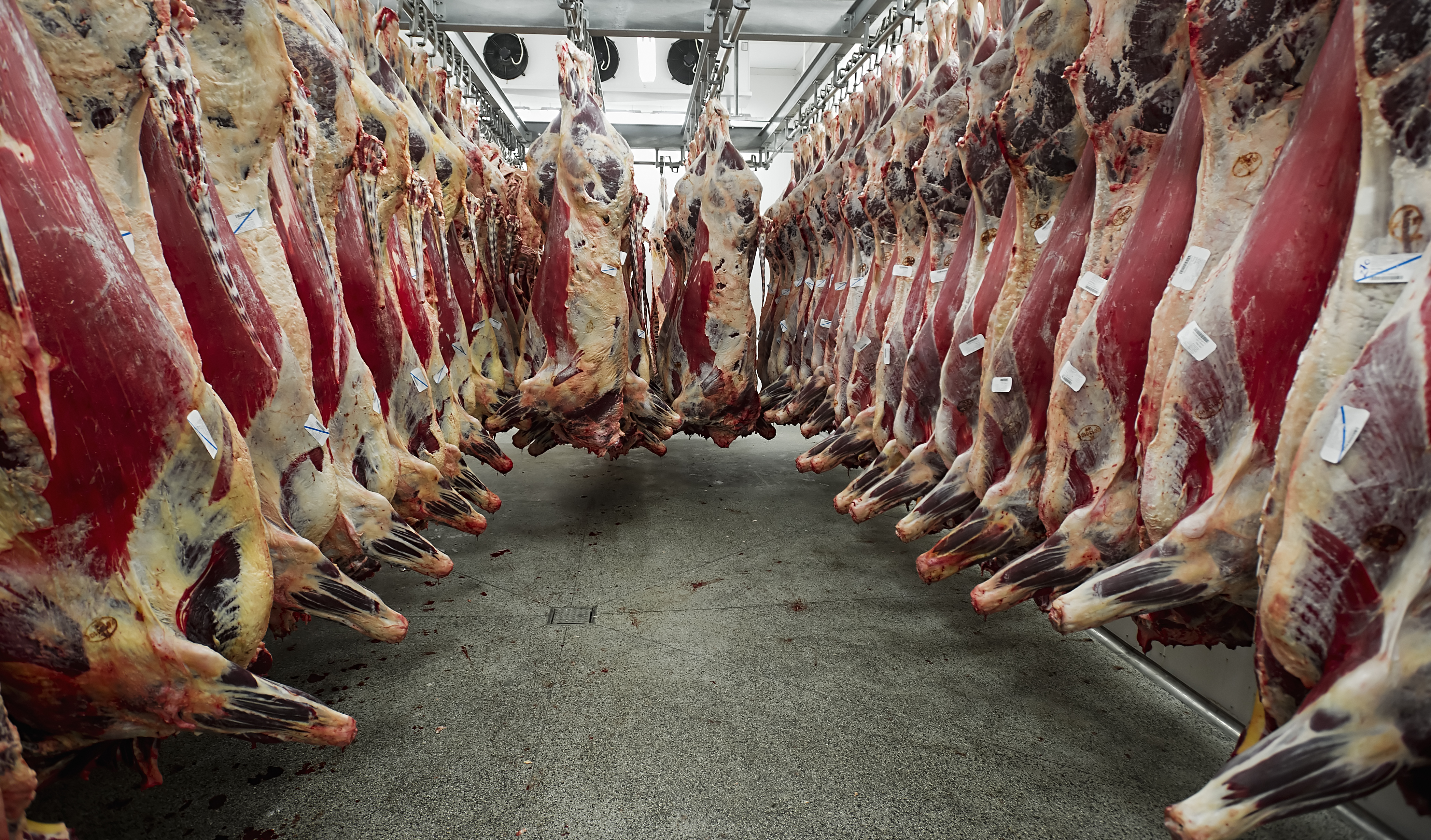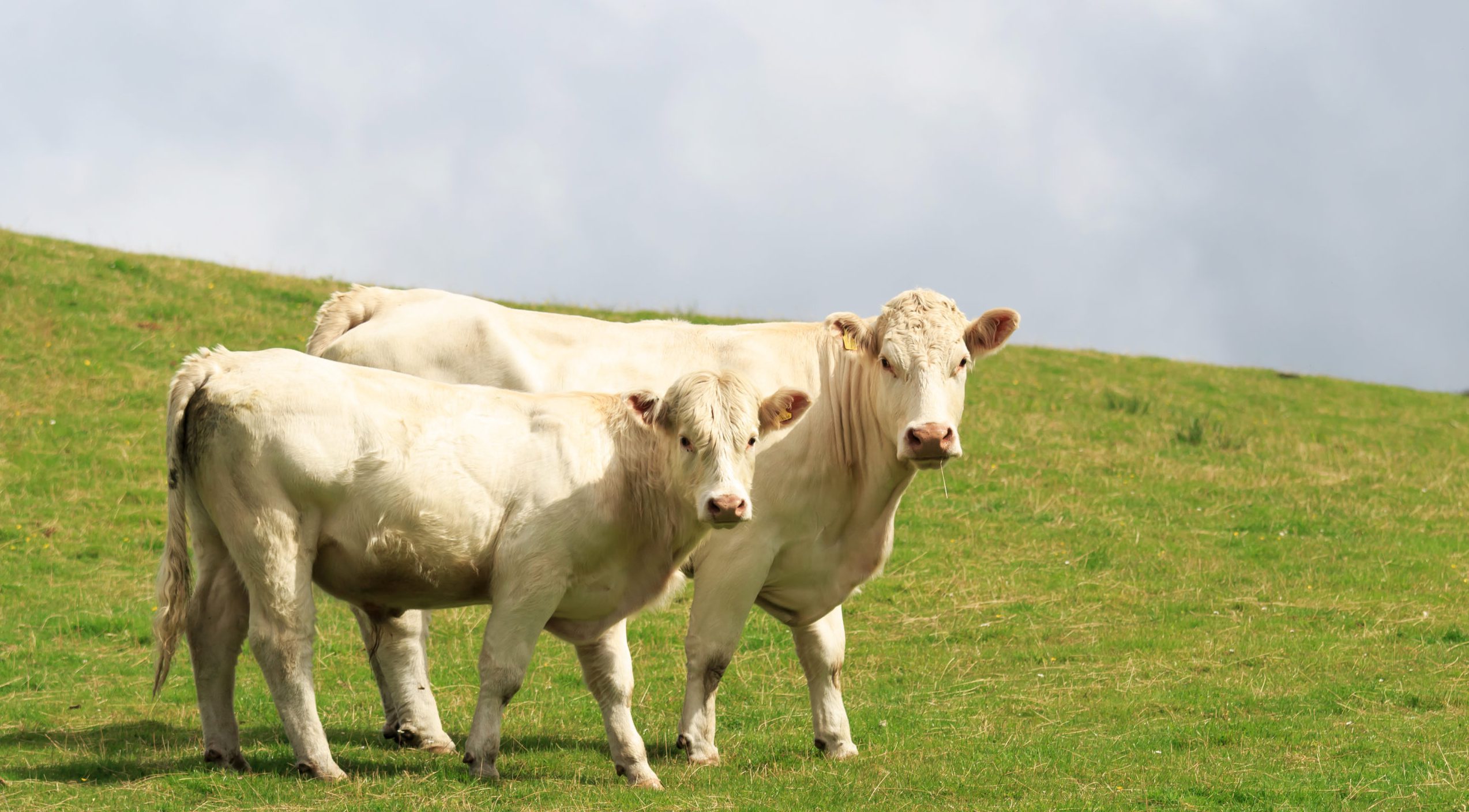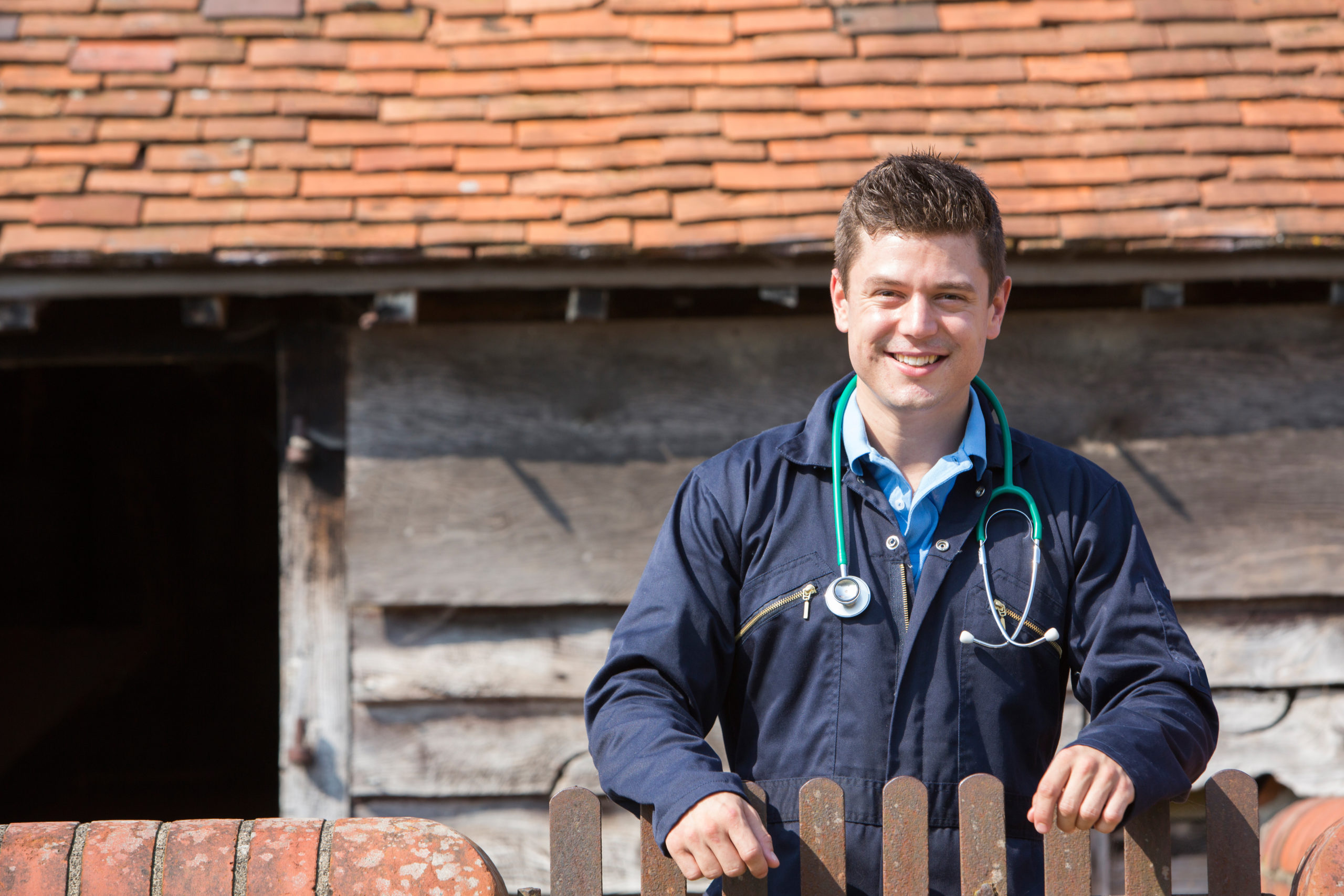Changes to compensation paid for cattle compulsorily slaughtered for bovine TB control in England were introduced on 1 November 2018 following a public consultation.
Bovine TB is one of the most difficult animal health problems facing England’s cattle farmers, resulting in a significant financial burden for industry and government. In 2018 over 32,000 cattle were compulsorily slaughtered for TB control purposes in England, and compensation payments in 2018/19 totalled £34 million. As part of the Strategy for achieving officially TB free (OTF) status for England, Defra is adapting the way that compensation funding is used to incentivise on-farm practices that reduce disease risks.
Cattle owners in England are paid compensation by Defra under The Cattle Compensation (England) Order 2019 for cattle compulsorily slaughtered for disease control purposes. Small changes to the compensation regime in England took effect from 1 November 2018.
Compensation reduction for unclean cattle

Cattle producers in England are required to ensure the cleanliness of animals presented for slaughter under the clean livestock policy.
If cattle are contaminated with faeces at the time of slaughter, there is a risk that the meat could become contaminated during the dressing process with harmful bacteria such as Salmonella, E.coli 0157 and Campylobacter. Research has shown that the dirtier the hide, the greater the potential for carcase contamination and the higher the risk to human health. Wet hides may also increase the risk of bacteria being transferred more readily.
TB-affected animals removed for TB control purposes must meet the same standards of cleanliness that are applied to all other animals sent for slaughter.
Food Business Operators (FBO), including slaughterhouses have a responsibility under the legislation to produce food safely by applying robust hygienic practices. At the slaughterhouse animals are checked by Food Standards Agency (FSA) staff before slaughter for cleanliness and dryness. To prevent the contamination of meat and reduce risks to public health, the official veterinarian (OV) at the slaughterhouse may reject for slaughter any animal that does not meet the required standard of cleanliness.
The criteria for cleanliness of cattle are separated into five categories, ranging from clean and dry, to filthy and wet. Only categories 1 and 2 (clean and dry/slightly dirty and dry/damp) would normally be allowed to proceed to slaughter for human consumption without further action needing to be taken. More information on the categories of cleanliness for cattle, and guidance on how to produce clean cattle can be found on the FSA website. Most cattle producers recognise the importance of producing clean cattle, and it is rare for FBO’s to reject cattle for slaughter for this reason. Cattle that are too dirty for slaughter not only represent a public health risk, but can also be indicative of animal welfare issues on the farm of origin
To protect public health and the welfare of cattle, since 1 November 2018, a 50% reduction in compensation is applied for cattle that cannot be processed for human consumption at a slaughterhouse because they are unclean. Only a very small proportion of the TB-infected cattle sent to slaughter are affected.
Compensation reduction for cattle moved into a TB breakdown herd and subsequently removed for TB control purposes
There are a number of reasons why owners of TB-restricted herds may need to bring cattle onto their holding, however these cattle are at greater risk of becoming infected than cattle moved into unrestricted herds.
Owners of TB-restricted herds can move cattle onto their holding in defined circumstances, under licence and subject to a favourable veterinary risk assessment by APHA. In this situation, the taxpayer takes a disproportionate share of the financial risks associated with introducing cattle into TB breakdown herds, in particular the cost of compensation if those animals become reactors.
For this reason, Defra has followed the example of the Welsh Government and applies a 50% reduction in compensation for animals moved into a TB breakdown herd that are subsequently removed as TB reactors or direct contacts before the herd regains OTF status.
The 50% reduction in compensation payment does not apply where the herd is registered to a bovine TB health scheme licensed by the Cattle Health Certification Standards (CHECS), provided that accreditation was gained before the herd lost its OTF status. It also does not apply to Approved Finishing Units (AFU/AFUE), Licensed Finishing Units (LFU) and TB Isolation Units (TBIU).
Multiple compensation reductions
In England, reductions to compensation payments are applied to TB reactors found at tests that become overdue by more than 60 days after their due date. The percentage reductions applied are:
- Overdue test by more than 60 days up to 90 days – 25% reduction.
- Overdue test by more than 90 days up to 180 days – 50% reduction.
- Overdue test over 180 days – 95% reduction.
From 1 November 2018, 50% reduction in compensation also applies to;
- Animals removed for TB control purposes that cannot be processed for human consumption at a slaughterhouse because they are unclean.
- Animals moved into a TB breakdown herd that are subsequently removed as TB reactors or direct contacts before the herd regains OTF status.

Multiple reductions are applied if more than one of the above scenarios applies. For example, if a TB reactor is identified at an overdue TB test and was moved into the herd during a TB breakdown, then a 50% reduction is applied to the already reduced amount from overdue TB testing. However, in this scenario if the animal is then found to be unclean when presented at the slaughterhouse, no additional reduction would be applied.
If a TB reactor is identified at an overdue TB test and is also found to be unclean at slaughter, then the 50% reduction would be applied to the already reduced amount from overdue TB testing. If an animal removed for TB control purposes was moved into the herd during a TB breakdown and found to be unclean at slaughter, then only 50% reduction would be applied.
Q&A
Compensation reduction for unclean cattle
To protect public health and animal welfare by providing a disincentive for cattle producers to present dirty cattle for slaughter.
The government recognises that the vast majority of cattle producers meet their obligation to present clean cattle for slaughter. In a small minority of cases, dirty cattle are rejected by FSA at the slaughterhouse. Based on what we have seen in previous years we expect to see less than 20 such cases per year i.e. where compensation payments are reduced.
The official veterinarian (OV) at the slaughterhouse makes the decision, based on objective criteria, on behalf of the Food Business Operator (FBO). There is established Food Standards Agency (FSA) guidance in place on the cleanliness of cattle, including criteria for scoring of cleanliness. Further information can be found on the FSA website.
It is the cattle producer’s responsibility to ensure their cattle are presented for slaughter in a clean condition. Contamination of otherwise clean cattle with faeces/dirt during transport to the slaughterhouse would not usually represent the level of contamination required to reject the animal for slaughter. Animals rejected for slaughter are highly contaminated with ingrained faeces/dirty in combination with a wet hide, which is unlikely to occur during the journey to the slaughterhouse. If an animal has become contaminated in transit this will be apparent to the official veterinarian assessing the animal.
Clipping is stressful for both the animal and operator, and is not an acceptable alternative to ensuring that the animal leaves the farm in a clean condition. In addition, extra time spent in the lairage clipping cattle reduces the line speed and incurs additional costs to producers and slaughterhouses. It is the owner’s responsibility to comply with the clean livestock policy. If absolutely necessary, farmers can employ a specialist contractor to clip their cattle prior to sending them to slaughter. For more information about safe handling of livestock, see the Health and Safety Executive website.
The Food Standards Agency official veterinarian at the slaughterhouse notifies APHA of any animals that are rejected for slaughter because they are unclean. APHA then notifies the owner by letter of the decision and applies the 50% reduction to compensation payable.
Yes. The compensation reduction applies to unclean animals presented for slaughter regardless of whether they have had a standard table based valuation or an individual valuation. Individual valuations are used for less than 1% of animals removed for TB control purposes.
No. The decision made by the FSA official veterinarian at the slaughterhouse on behalf of the Food Business Operator is final. Owners wishing to discuss the decision should contact APHA who can provide further details.
No. The compensation reduction only applies to cattle presented at a slaughterhouse and therefore does not apply to animals shot on farm.
No, not unless there are other reasons to do so, such as an animal within the medicines withdrawal period or a female in the latter stages of gestation. An animal that is too dirty to be processed at a slaughterhouse is not a valid reason to request shooting on farm. If a cattle keeper refuses to clean up their animals prior to slaughter, APHA may carry out a targeted visit to assess on-farm animal welfare if deemed necessary.
Compensation reduction for cattle moved into a TB breakdown herd and subsequently removed for TB control purposes
To enhance TB controls by incentivising herd owners to take actions to reduce the risk of purchased cattle becoming infected e.g. by isolating them from the rest of the herd where possible.
From 1 November 2018. The 50% compensation reduction applies to animals moved into TB breakdown herds from 1 November 2018 that are subsequently removed for TB control purposes prior to the herd regaining OTF status. It does not apply to animals moved into TB breakdown herds before this date.
This compensation measure has no implications for a significant majority of TB-affected herd owners. In 2016, less than 1% of herds brought in cattle which later became TB reactors.
No. The compensation reduction only applies to animals moved into the herd during an ongoing TB breakdown that are subsequently removed as TB reactors or DCs prior to the herd regaining OTF status. It does not apply to animals moved in before or after the ongoing TB breakdown.
Yes. The reduction applies to animals subject to table based valuation and individual valuation. Individual valuations are used for less than 1% of animals removed for TB control purposes.
APHA uses the Cattle Tracing System (CTS) to perform checks on cattle slaughtered for TB control purposes to ascertain whether they were moved onto the holding during an ongoing TB breakdown. APHA notifies owners by letter if a 50% compensation reduction is to be applied.
The reduction does not apply where the herd is registered to a bovine TB health scheme licensed by Cattle Health Certification Standards (CHECS), provided that accreditation was gained before the herd lost its OTF status. Herds participating in a bovine TB health scheme have a score from 1-10, denoting the number of years of official TB freedom. For example a herd that has been OTF for ten years has a score of 10 and a herd that has been OTF for one year has a score of 1. If a herd is CHECS accredited for bovine TB and loses its OTF status, then its CHECS score reverts to zero as the herd cannot participate in the scheme unless it is OTF. Once the herd regains its OTF status, it can slowly build up its CHECS score again. Herds participating in a bovine TB health scheme licensed by CHECS receive 100% compensation for animals moved into the herd and subsequently removed for TB control purposes for the length of the ongoing breakdown. For more information about bovine TB health schemes, visit the CHECS website.
Yes, the reduction still applies as the receiving TB breakdown herd was not CHECS accredited prior to losing its OTF status. The CHECS accreditation applies to the receiving herd, not the animals being moved in, and so the reduction applies regardless of the source of the animals.
The reduction does not apply to animals moved on to Approved Finishing Units (AFU/AFUE), Licensed Finishing Units (LFU) and TB Isolation Units (TBIU).
Yes. The reduction still applies to animals moved into a breakdown herd from a tCPH, even if it is part of the same TB breakdown.
No. The reduction does not apply to animals moved from TLAs, as the land is within 10 miles of the holding.
